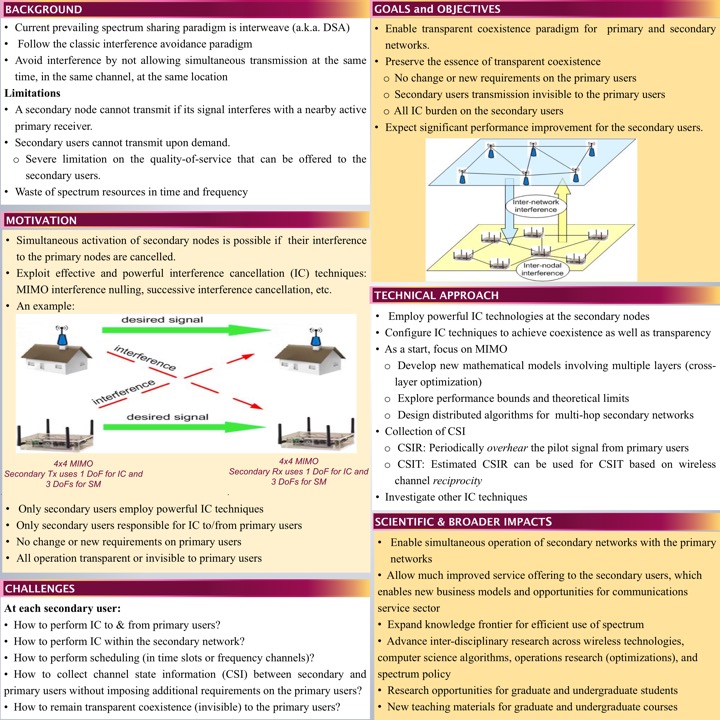 Transparent Coexistence for Multi-Hop Secondary Cognitive Radio Networks: Theoretical Foundation, Algorithms, and Implementation
Transparent Coexistence for Multi-Hop Secondary Cognitive Radio Networks: Theoretical Foundation, Algorithms, and Implementation
This project is supported by the National Science Foundation. Award # 1247830
PI: Thomas Hou; Co-PIs: Hanif D. Sherali, Wenjing Lou (Former Co-PI)
Project Duration: September 1, 2012 – August 31, 2015
Recently, the idea of simultaneous activation (or transparent coexistence) of secondary and primary nodes is being explored. Under this new paradigm, secondary nodes are solely responsible for canceling their interference with the primary nodes so that the primary nodes do not feel the presence of the secondary nodes. Although this new paradigm has the potential of offering much greater spectrum efficiency and network capacity than those under the existing interference avoidance paradigm, it is still in its infancy and current results are only limited to very simple network settings. The goal of this project is to make a fundamental advance in the transparent coexistence paradigm for multi-hop secondary networks. Specifically, this project aims to study the following important problems in the context of multi-hop networks: (1) developing new analytical models for the transparent coexistence paradigm; (2) exploring performance bounds and theoretical limits for multi-hop secondary networks; and (3) developing distributed algorithms for multi-hop secondary networks that can offer performance approaching that of a global optimal solution.
